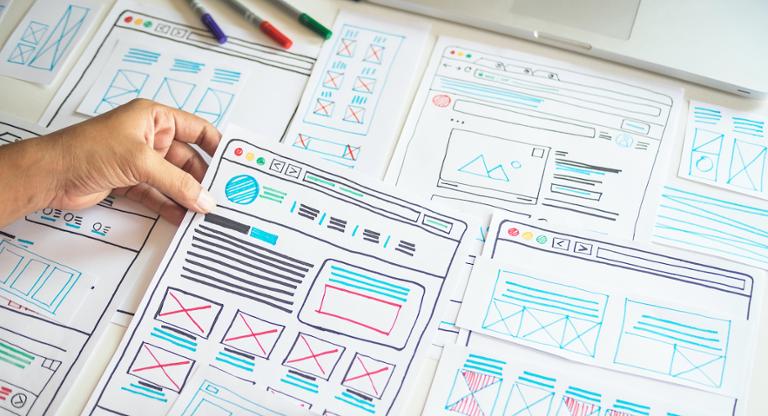UI/UX designers are an essential part of creating great software. Organizations know this, which is why UI/UX designers are often highly paid. But what’s the average UI/UX designer salary, and how high can it go?
Before we plunge into the data, it’s important to note that “UI” and “UX” are fundamentally different, although some folks make the mistake of using them interchangeably. “UX” stands for “user experience design,” or how users interact with a product (whether it’s an app, service, game, or something else). Meanwhile, “UI” is “user interface design,” a digital-centric term for a product’s feel and interactivity. In order to maximize their salaries, UI/UX designers must show they’ve mastered both disciplines simultaneously.
With all that in mind, let’s jump in!
What is a UI/UX designer’s starting salary?
According to Emsi Burning Glass, which collects and analyzes millions of job postings from across the country, UI/UX designers with between zero and two years of experience can earn a median salary of $82,000. That figure obviously increases with tenure; with more than nine years of experience, UI/UX designers’ median salary can increase to $110,000 (or more) per year.
What is a UI/UX designer average salary?
Emsi Burning Glass also suggests the median salary for all UI/UX designers is $97,365 per year, although this can shift radically depending on experience, skills, and the company you work for. Dice’s latest Tech Salary Report pegs the average salary for a UI/UX designer at $101,260 per year, a 10.1 percent increase between 2020 and 2021.
What do UI/UX designers make in comparison to other popular tech positions?
The Dice Tech Salary Report estimates the average technologist salary at $104,566, a 6.9 percent increase between 2020 and 2021. The average UI/UX designer salary is close to that amount; they can easily surpass it with the right mix of skills and experience.
How do you negotiate salary?
Based on Emsi Burning Glass’s analysis, the following skills pop up over and over again in job postings for UI/UX designers:
- UX wireframes
- User research
- User interface (UI) design
- JavaScript
- Prototyping
- Adobe Photoshop
- Visual design
Whether you’re negotiating for a raise from your current employer or a higher base salary from a prospective one, you should show that you’ve mastered key skills and can use them to help the organization accomplish its strategic aims. Companies are more inclined to pay more if you can demonstrate your value.
When applying for jobs and negotiating for a great starting salary, UI/UX designers should always keep their portfolio updated with their best work; in addition, they should tailor their resume, cover letter, and any other application materials to show how their projects had a measurable impact on their previous employers. Great design can boost user satisfaction and engagement, and even translate into bigger profits and cost savings; show data, if you have it.
It’s a similar process when negotiating with a current employer: Come prepared with examples of your value, and show how your skills mastery will only benefit the business as time goes on. And remember to stay flexible—you can always negotiate for things other than money, like benefits.
Are UI/UX designers in demand?
According to Emsi Burning Glass, employers posted some 80,065 open UI/UX designer positions over the past 12 months, and the average time to fill an open position is 47 days—indicating a very high level of demand.
Emsi Burning Glass also predicts that the market for UI/UX designers will grow 10.9 percent over the next 10 years. So long as organizations need user interfaces designed, they’ll need these specialists.
Sign Up Today
Membership has its benefits. Sign up for a free Dice profile, add your resume, discover great career insights and set your tech career in motion. Register now


